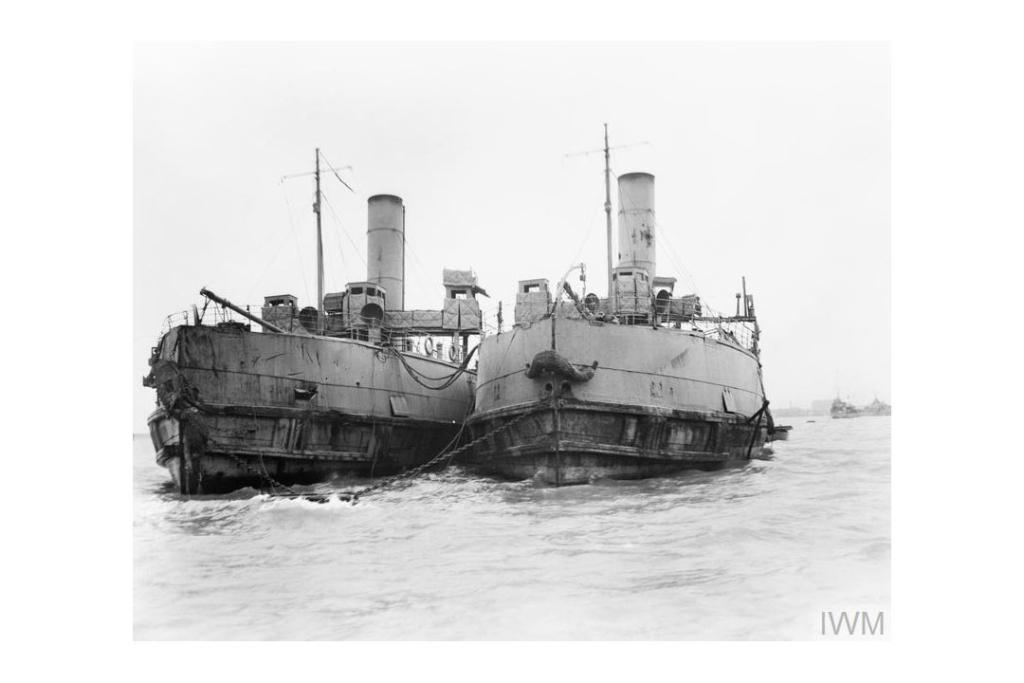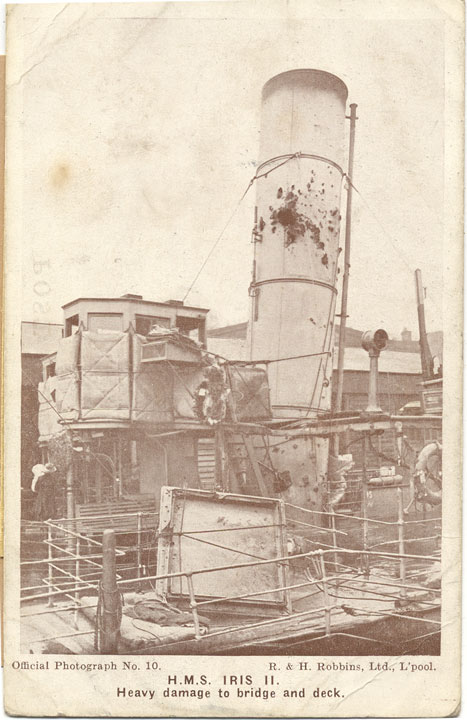Centenary of Mersey ferries' daring Zeebrugge raid

The Mersey ferries Daffodil and Iris II at Dover soon after the vessels returned from the Zeebrugge Raid © IWM (Q 18888)
Anyone who’s looked out across the Mersey in the last couple of years has probably noticed the very colourful Mersey ferry Snowdrop in her fabulous dazzle-inspired livery. Designed by Peter Blake to mark the centenary of the First World War, it is reminiscent of the Dazzle camouflage used by thousands of ships in the conflict.
If you step on board and visit the display co-curated by National Museums Liverpool you’ll discover that when the Mersey ferries played their own role in the war, their livery couldn’t have looked more different to the spectacular Dazzle.
In 1918 Mersey ferries Iris II and Daffodil were chosen to take part in a daring raid on Zeebrugge harbour in German occupied Belgium. The harbour was an outlet for German U-boats and destroyers based up the canal at Bruges and, as these posed a serious threat to the Royal Navy and the south east coast of England, it had been decided to take drastic action. Three obsolete cruisers (Thetis, Intrepid and Iphigenia) would be used as block ships, sunk in the mouth of the canal to make it impassable.
To position the blockships, British forces would first have to get past the Mole. The Mole was the harbour wall, complete with warehouses, a quay, and heavily armed German troops. To allow the three block ships to reach the canal, troops transported by the Iris II, Daffodil, and cruiser HMS Vindictive would storm the Mole while an old submarine would be blown up under the viaduct connecting the Mole to the mainland to prevent German reinforcements.
It was a daring and audacious plan and to carry it off the Royal Navy needed the assistance of two Mersey ferries. Though not an obvious choice on the surface, the ferries were actually well-suited to their role by nature of their design. They had double hulls, a safety feature meaning that the bottom and sides had two watertight layers forming a barrier in case of hull damage, and they also had a low draught in the water meaning they could sail right over the top of enemy minefields.
Requisitioned by the war office, the ferries were quietly withdrawn from service on the Mersey and taken to Portsmouth to be made ready for their new role. Painted grey and reinforced with armour plating on the hulls, between them they embarked hundreds of troops and the 22 foot scaling ladders that would be needed to reach the Mole from the ferries.
Then on the night of 22 April 1918 they set off under cover of darkness, towed by HMS Vindictive across the channel to Zeebrugge. The plan was to unleash a smokescreen that would block the vessels from the view of the guns on the Mole. Unfortunately a last minute change in the wind left the ships exposed and in grave danger, as marine Ernest F Tracey who was aboard Iris II remembers:
“Would you believe it, everything going so well, and very, very nearly there, and fate steps in with the wind turning completely round, now from the shore and blowing the smoke out to sea behind us and there we are, Vindictive, Iris and Daffodil, only 300 yards from the Mole and in broad daylight so to say from star shells and searchlights.” - ©IWM Catalogue number 13921

Photographic postcard showing the extensive damage suffered by Iris II. From Maritime Archives Collection, PC 1906-26.
They quickly found themselves under heavy fire and as Vindictive came alongside the Mole she struggled to maintain her position and had to be pinned against the harbour wall by Daffodil. The idea had been for Daffodil to hold Vindictive in place just long enough for the Vindictive troops to disembark, before coming alongside to land her own troops but this was impossible and troops had to climb first from Daffodil to the Vindictive and then attempt to board the Mole from there.
Iris II also struggled to land her troops and all three vessels suffered heavy casualties. The three intended block ships were also under fire and Thetis sank before ever reaching the canal entrance. Intrepid and Iphigenia were scuttled as planned in the narrow point of the canal and the Submarine C3 successfully blown up under the viaduct to cut the Mole off from the mainland and reinforcements.
Crews from all of these vessels were rescued by motor boats. With the objective gained the two ferries and Vindictive manged to return to Britain, but they had all suffered substantial loss of life. Daffodil was towed back but Iris II made the return journey under her own steam, despite partial flooding and massive damage. Ernest F Tracey recalled:
“The bridge of the Iris was in bad shape for navigating and the youngster who was now captain of the ship, only a young lieutenant, had very little left by way of instruments. I think he was left with a hand compass.” - ©IWM Catalogue number 13921

Diagram showing raid on Zeebrugge harbour, Belgium.
You can see the Iris II and Daffodil at the top beside the harbour wall with the HMS Vindictive.
The success of the raid is debatable. The Germans made a new channel round the sunken ships and within two days submarines were using the canal again with destroyers able to navigate the canal by mid-May. The human cost had been high with 170 killed (79 of these on Iris II), 400 wounded and 45 missing.
However the raid was a huge victory in terms of British morale, its daring nature capturing public imagination. Eleven Victoria Crosses were awarded and the two ferries returned home to the Mersey in triumph. Iris II and Daffodil were welcomed back in May by the Mayor and Mayoress of Wallasey and hundreds flocked to see them and their battle scars in Canning Dock while they awaited repair.
The ferries’ contribution was recognised far outside of the local area and they were awarded the Royal prefix in recognition of their part in the raid. These Royal names have been handed down through a series of Mersey ferryboats to the present day, preserving this fascinating piece of Mersey history.
A service to mark the centenary of the raid was held on Sunday 22 April 2018 at Seacombe ferry terminal and on board the ferry.
